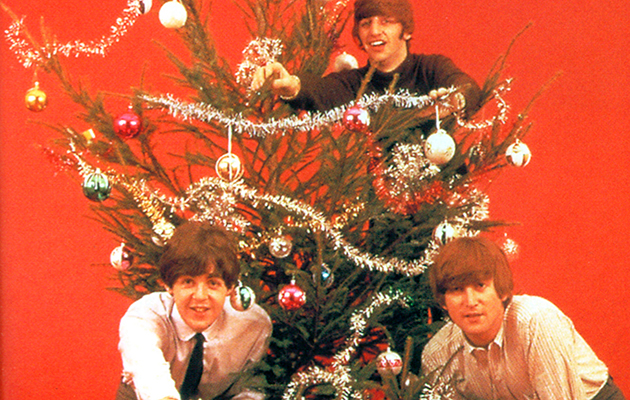In 1963, remembers Tony Barrow, PR to The Beatles between 1962 and 1968, the popularity of the band could be measured by the sackful. On each of the stairs that connected the ground floor of 13 Monmouth Street, London WC2 (“a dirty bookshop”) to the one-and-a-half rooms above (Epstein’s London HQ until March 1964), there were bags of unopened mail.
Without the attention of someone like Freda Kelly – who ran The Beatles Fan Club from Liverpool and who had remained there when the office moved south, an enjoyable situation – the band’s growing popularity was creating an administrative nightmare. Barrow envisioned a mob of angry parents. Where were the fan club memberships for their children? What was the likely fate of their postal orders?
His solution was inspired. Reasoning that fans had made their first connection with The Beatles via records, he now proposed to give them one for nothing, to thank them for their patience. Taking his cue from Reader’s Digest, who advertised their own boxed sets of records using “paper” discs – what we now call “flexidiscs” – he placed a call to Lyntone, the London company that manufactured them. In doing so, he didn’t only take steps to solving his immediate problem, but also helped create a fascinating alternative canon. Through it, you can observe a humorous and satirical Beatles, a Beatles becoming more confident and autonomous in the studio, even a Beatles drifting apart. These, now with a lively online fanbase, were The Beatles’ Christmas records.
“That first record was a damage-limitation exercise – designed to get a lot of fans and their parents off our backs,” remembers Tony. “We didn’t want people to be disappointed or disillusioned with The Beatles. So if they were presented with a record that was exclusive to them, that the general public could not buy, this would go a long way to appeasing everybody. Paid-up members were gobsmacked to receive a record of The Beatles talking to them. It was important to keep the fan club on side.”
Rather unlike every fan club since, The Beatles club was designed not as a shop, but as an information service – a mission into which the Christmas record fitted perfectly. In Liverpool, Freda Kelly – arguably one of those most in the know – illustrated the need for such a record. It wasn’t until Cilla Black dropped into her Liverpool office one day that she discovered that The Beatles had not only made a fan club record – they had made one mentioning Freda. Not having heard the record, and knowing the band to have a caustic sense of humour, she thought this a potentially dubious honour.
“I said to John, ‘I bet you’ve ripped me apart’,” remembers Freda today. “And he said, ‘’Course we have.’”
In fact, the mention of Freda (a brief but respectful thanks, from George Harrison) was very much in keeping with what Tony Barrow envisaged for the project: for the band to convey gratitude to the faithful for their support, in their own vaguely surreal manner. Ultimately, though, the record helped burnish the utterly original proposition made by The Beatles: that they were characters as much as beat musicians, their appeal not confined to their songs, but also the personalities beyond them.
“What I was keenest to project of the band was their humour,” says Tony. “We could only really expose that through interviews: whether that was TV, radio or written media.”
As he had for their early press appearances, for the Christmas record Barrow had written a script for the band to work to, but as it proved, they quickly departed from it. The idea of an annual broadcast evidently caught their imagination: though Barrow considered it a one-off, the band approached him in 1964 about another possible recording date.
“They were more than happy to do it,” Tony remembers. “Again I provided a script for them. They sent it up and as a result they made it a far funnier record: they thanked the fans, then went into comedy routines. They were ahead of their time in terms of the comedy they could produce at the drop of a hat.”
As tempting as it might be to imagine that The Beatles combined not only an unbeatable ear for melody, but also a gift for family-friendly humour, it’s worth listening to outtakes of the 1965 record as a corrective. Painfully, the group attempt to improvise “bits” to the sound effects being fired at them. The arguable highpoint is John and George alighting on an idea for tinned, sliced babies (“the limbs and head go into Pal kennel meat…”) and John saying that for spots he uses a product called “Gumtree’s Arseholes”. In the background Barrow can be heard attempting to lift the band’s spirits by saying that with judicious editing, they may be able to use a few seconds of this largely dire material. “Those Christmas records show a lot of things that influenced them,” says Ken Scott, second engineer on the 1965 record. “They all adored the Goons. Peter Sellers became a close friend of George’s. Those recordings take a lot from the silliness of the Goons – it’s the kind of thing that led to George getting involved with Monty Python later on.”



